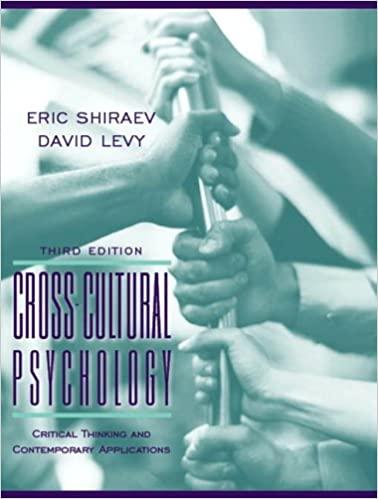Answered step by step
Verified Expert Solution
Question
1 Approved Answer
States of Consciousness Do Nothing Directions: Watch this YouTube video, What is consciousness? posted by TedEd. Use the questions below to process the information

States of Consciousness Do Nothing Directions: Watch this YouTube video, "What is consciousness?" posted by TedEd. Use the questions below to process the information shared. You can access the video by scanning the QR code, or by clicking on the following URL:https://youtu.be/MASBIB7zPo4 1. According to the video, what is the definition of consciousness? 2. As a budding psychologist, how would you hypothesize, "where does consciousness comes from?" Share your theory and theories discussed in the video. Levels of Consciousness Directions: Assess how this definition of the states of consciousness compares with the information from the video. lifelong Psychology A "We are Conscious of both external work and our internal selves, we are aware of an image in much the same way we are aware of ourselves looking at an image or our inner thoughts and Consciousness is the brain's imperfect Picture of its own activity? Video A. States and altered states of consciousness 1. Wakefulness is characterized by high levels of awareness, behavior, and thought. 2. Sleep is characterized by lower levels of physical activity and sensory awareness. 3. A preconscious is when mental events are outside of current conscious awareness but can be brought into consciousness voluntarily (i.e., remembering). 4. A nonconscious is when mental processing occurs outside conscious awareness (e.g., controlling heart rate, respiration, and temperature). 5. An unconscious state is the lack of awareness (e.g., a state rendered by drug-induced anesthesia for medical procedures). 6. Altered states of consciousness a. Hypnosis is the state of self-focus in which little attentionis given to external stimuli. emotions! b. Meditation is focusing on a single target (e.g., breathing) to increase awareness, achieve a sense of peace and tranquility and/or being "in the moment". c. Psychoactive drugs are chemical substances that act upon the central nervous system and are associated with changes in perception, mood, and behavior. LEP 4 HS-L4L Psychology A (2022) 5
Step by Step Solution
There are 3 Steps involved in it
Step: 1

Get Instant Access to Expert-Tailored Solutions
See step-by-step solutions with expert insights and AI powered tools for academic success
Step: 2

Step: 3

Ace Your Homework with AI
Get the answers you need in no time with our AI-driven, step-by-step assistance
Get Started


